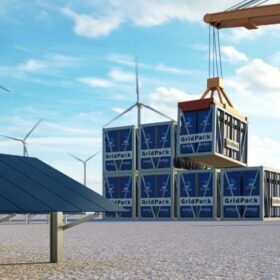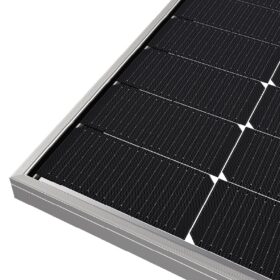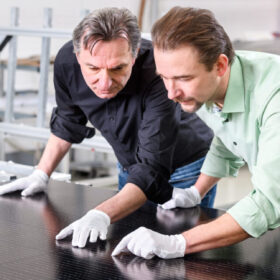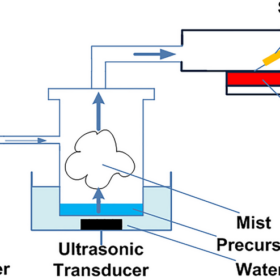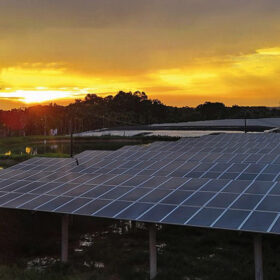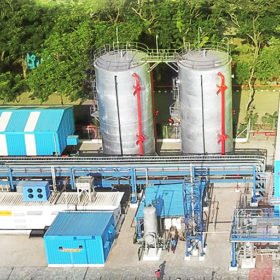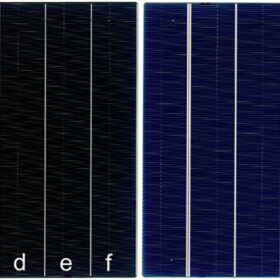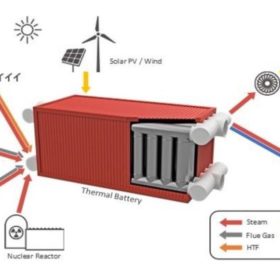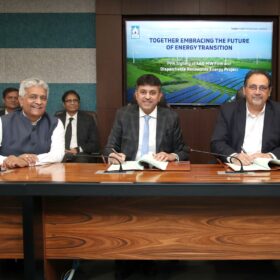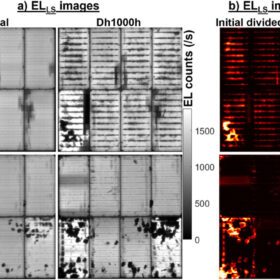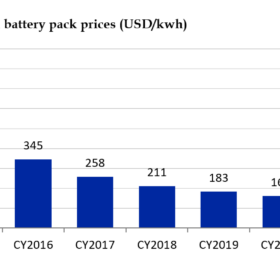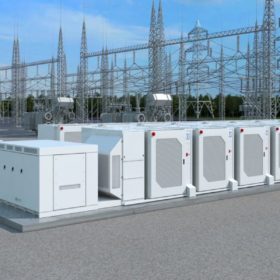Australian manufacturer reveals 1 MWh sodium chloride battery design
Altech Batteries, a battery tech company in Western Australia, has included “game-changing” sodium chloride technology in its new battery 1 MWh GridPack. It said it expects the new systems to be up to 40% cheaper to produce than dominant lithium-ion alternatives.
Case study demonstrates 5% energy yield boost for n-type TOPCon modules
Data collected from a 30 MW PV project in China’s Tianjin Province demonstrates that n-type tunnel oxide passivated contact (TOPCon) modules achieve a little more than 5% more energy yield than p-type PERC. Analysis by JinkoSolar, which supplied its TOPCon modules to the project, credits the n-type modules’ increased performance to a better temperature coefficient in the project’s hot climate, higher bifaciality and lower degradation.
Silicon anode lithium-ion battery cell with 500 Wh/kg density
Amprius has obtained third-party performance verification for a battery cell that offers high power density in a lightweight package.
German manufacturer achieves 80% overall efficiency with new PVT solar module
Sunmaxx says Fraunhofer ISE has confirmed the 80% efficiency of its new photovoltaic-thermal (PVT) module. It consists of 108 PERC half-cells in M10 format, with 400 W of electrical output and 1,200 W of thermal output.
Indian researchers develop low-cost method to produce metal-oxide layers for solar cells
Researchers at IIT Mandi developed high-quality, uniform thin films of nickel oxide on the silicon substrate using an aerosol-assisted chemical vapor deposition technique with nickel nitrate as the precursor material.
Shingle all the way
While shingled cells have been around for a while, Tongwei’s adoption of the technology is notable as it is a manufacturer with considerable scale. If shingling can overcome some hurdles, it could prove a welcome solution as unshaded sites for PV become elusive in mature solar markets.
IndianOil targets 200 GW of renewable energy portfolio by 2050
The state-owned oil and gas major targets 200 GW of renewable energy capacity by 2050. It also plans to have around 2 million metric tons of green hydrogen capacity in its fold by 2050.
CSIR working on improving lifetime of electrolyzers
The Council of Scientific & Industrial Research’s Hydrogen Technology (H2T) program focuses on improving the lifetime of electrolyzers by developing thermochemically robust membranes and electrolytes, reinforced fluoropolymer membranes, graphite composite bipolar plates, and ceramic interconnects.
TOPCon shingle solar cell achieves 22.0% efficiency via thermal laser separation
Scientists from Germany’s Fraunhofer ISE and US panel maker Solaria have applied thermal laser separation and post-metallization passivated edge technology to tunnel oxide passivated contact (TOPCon) cell production. They have developed shingle PV devices that are more efficient than cells built with conventional laser scribing and mechanical cleaving methods.
New thermal battery offers fast, efficient performance at low cost
US engineers have built a scalable thermal energy storage prototype system that combines the best latent and sensible heat transfers. The technology, which is now market-ready after three years of testing, consists of engineered cementitious materials and thermosiphons in a combination that enables fast, efficient thermal performance at low cost.
